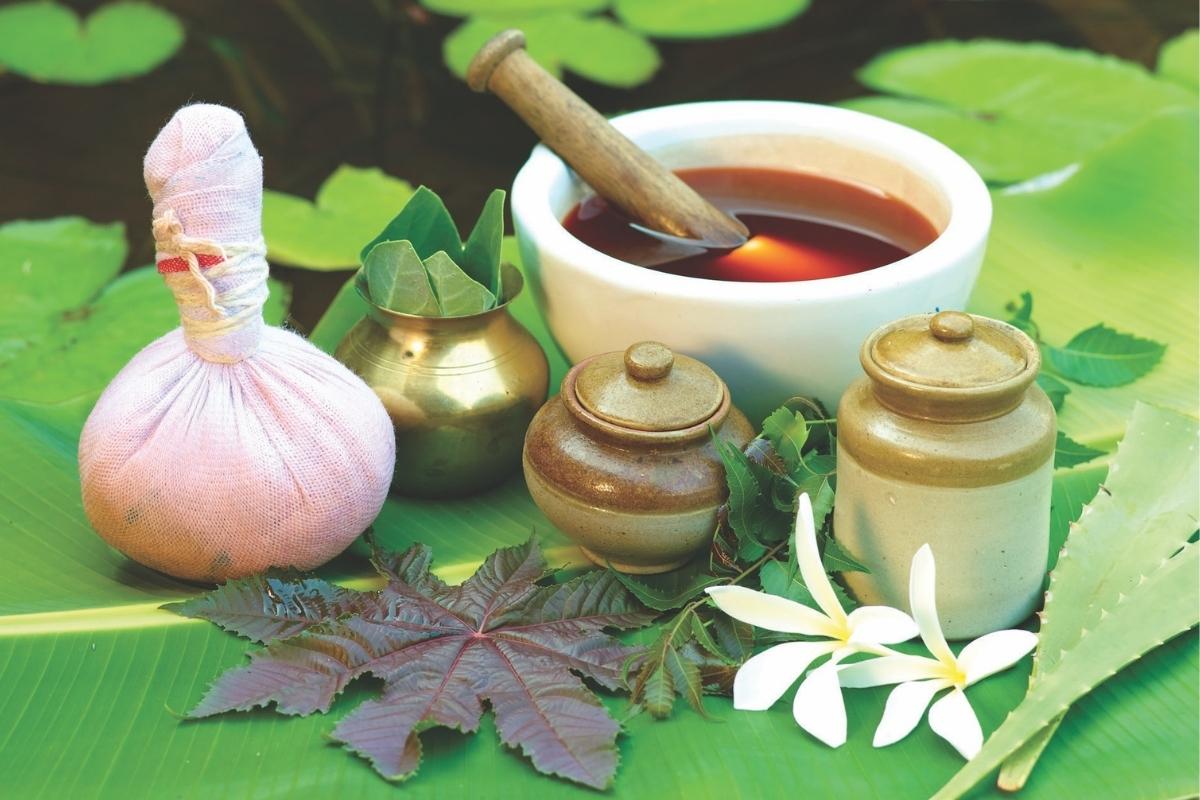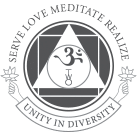Sivananda Bahamas Blog
Expand Your Horizons …
Our Blog
Ayurveda 101, The Science of Life: How to Use the 3 Doshas for Optimal Living
What is Ayurveda and how can we benefit from it?
Ayurveda is a natural system of medicine that originated in India more than 3,000 years ago! Derived from the Sanskrit words ayur (life) and veda (science or knowledge), Ayurveda translates to the knowledge or science of life.
The system of Ayurveda attributes disease to imbalances in a person's consciousness. It prescribes treatments unique to the individual's bodily constitution (Prakriti) based upon the 3 life forces or Doshas: movement (Vata), metabolism (Pitta), and nourishment (Kapha).
The primary focus of following Ayurvedic principles in everyday life (including in diet, sleep habits, daily routines, physical fitness, etc.) is to find and maintain balance between the body, mind, spirit and the environment through an internal purification process accompanied by a dosha-specific diet, herbal remedies, yoga, and meditation. Treatment aids the individual by eliminating impurities, reducing symptoms, increasing metabolism and resistance to disease, quietening mental anguish and bringing harmony to all areas of life. Knowledge of Ayurveda helps one to maintain general health and wellbeing long-term by allowing one to treat imbalances as they occur and before they manifest as greater problems to worry about (such as serious illnesses).

The Fundamentals of Ayurveda: Understanding the Importance of Prakriti and Vikriti
Ayurveda is based on grasping the knowledge of three fundamental concepts regarding one's health and bodily constitution.
- The nature of a person's constitution, or Prakriti
- The nature of a person's imbalance, or Vikriti
- The nature of the medicine utilized by the person, or the dravyu guna
Any Ayurvedic practitioner will need to understand these 3 fundamental concepts as they pertain to you before prescribing you a program of care specific to your needs. While this may seem straightforward, the use of the phrases "the nature of a person's constitution" (Prakriti) and "the nature of a person's imbalance" (Vikriti) are hard to fully comprehend.
The Nature of a Person's Constitution, or Prakriti
The Prakriti is one of the most important concepts in Ayurveda. Officially defined as "original creation", it is often translated to mean "a person's constitution". The word Prakriti is derived from the Sanskrit prefix "Pra", meaning original, and the Sanskrit "kriti", meaning creation. The Prakriti is the inherent balance of the 3 Doshas at the moment of a person's birth or creation. According to Ayurveda, it is at this moment in time (that of birth and creation) that a person's physiological and psychological tendencies are fixed according to the interplay between the 3 Doshas.
The interplay of the 3 Doshas, the physiological forces of the body, determines the body type and personality. Ayurveda surmises that people have tendencies that influence various physiological and physical factors such as: the length of the fingers; the shape of the eyes; the thickness of the skin; the quality of the hair; the strength of digestion; the ways in which a person reacts emotionally to stress; how introverted or extraverted a person is; how passionate or calm a person is; how driven or relaxed a person is; etc. Ayurveda states that all these factors (and more) are coded into a person's constitution and that a person's constitution (Prakriti) doesn't (typically) change throughout one's lifetime.
To know your constitution is to know your tendencies. By knowing these tendencies, you can take individual action to keep your tendencies in check and your body, mind, and soul consistently in balance. For example, if you know that you have a tendency to have poor blood flow to the extremities, if you know that you have a tendency to get cold easily, you can keep your body in balance by wearing more clothing, drinking tea, sticking to cooked foods and warm soups, and performing certain stretches that aid in circulation of blood throughout the whole body.
Every single one of us has the 3 Doshas within us. We define our constitution by the percentages of each Dosha. This means that even though there are 3 Doshas and 7 Datus, these is an infinite number of combinations that exist within humanity... essentially, no two people's Prakriti is exactly the same.
The Nature of a Person's Imbalance, or Vikriti
Officially defined as "after creation", Vikriti is often translated to mean "a person's imbalance". The word Vikriti is derived from the Sanskrit prefix "Vik", meaning after, and the Sanskrit "kriti", meaning creation. According to Ayurveda, following the moment of conception and while still in the womb, the human embryo is exposed to and altered by its environment. If the individual is in a healthy environment, the embryo forms optimally. If the environment remains optimal after birth, the child grows up healthy. If the environment in-utero or post-birth is in any way compromised (as it typically is in today's modern world), the 3 doshas are disturbed and out of balance. When the 3 doshas are out of balance from their original blueprint as set out by the Prakriti, the normal physiology of a person is upset. This results in symptoms of mental disturbances, various dependencies, and physical illnesses or diseases.
In Ayurveda, the term Vikriti refers to the current state of the 3 doshas, to how they are presently expressing themselves in the body, mind, and behavior of the individual in question. It is important to note here that in an optimal environment, there is no difference between the Vikriti and the Prakriti -- it is only due to the fact that most of us are in a less-than-optimal environment that our Vikriti differs from our Prakriti.
One of the ultimate goals of Ayurveda is to have a comprehensive understanding of a person's Vikriti and from that begin to piece together what aspects of the person's environment have contributed to the imbalances present. Once the aspects disturbing the person's state of balance are known, the goal evolves to become one of correcting both what the individual intakes through their 5 senses and the specifics of the individual's lifestyle overall. The lifestyle and intake through the 5 senses can be collectively referred to as one's environment.
The Building Blocks of Ayurvedic Constitution: The 3 Doshas of Vata, Pitta, and Kapha
Ayurvedic medicine relies upon the notion that the world consists of 5 elements: aakash (space), gala (water), prithvi (earth), teja (fire), and vayu (air). A combination of these 5 elements manifests in the human body and physiological constitution as the 3 doshas.
Every living creature on this Earth has the 3 doshas within them. The way these doshas manifest depend on the individual; no two people are the same. Kapha is responsible for our tissues. It is the nurturing aspect of our bodies and physiological/psychological constitutions. Pitta provides metabolic action. It is the energetic aspect of our bodies and physiological/psychological constitutions. Vata allows us to move and express ourselves. It is the aspect of movement in our bodies and physiological/psychological constitutions.

Vata
- Consists of the elements air and ether (or space)
- Described as cold, light, dry, rough, flowing, and spacious
- Autumn or fall is Vata season
- Vata types are slim, energetic, and creative
- Vata types are outside-of-the-box thinkers
- Easily distracted, a Vata type's mood is highly dependent on the weather, the people around them, and the foods consumed
- The strengths of a Vata type are: fast learner, adept multitasker, flexible, impressively creative, kind-hearted, always on the go, naturally slim
- The weaknesses of a Vata type are: anxious and forgetful, especially when stressed out; easily overwhelmed; highly sensitive to the cold; insomnia/trouble sleeping; irregular appetite and eating patterns; prone to gas and other digestive issues; poor circulation (resulting in cold hands and feet)
- For optimal health, Ayurveda suggests that a Vata-dominant person should: have a strict daily routine; have established stress management activities such as meditation; maintain warm body temperature through consumption of warm, cooked foods and drinks (such as tea)

Pitta
- Consists of the elements fire and water
- Described as hot, light, sharp, oily, liquid, and mobile
- Summer is Pitta season
- Pitta types typically have a muscular build, are very athletic, and make great leaders
- Pitta types are very competitive, highly motivated, and goal-oriented
- Pitta types can have a tendency to come off as too aggressive; this can be off-putting and lead to conflict
- The strengths of a Pitta type are: has a strong sense of purpose, high intelligence, fast learner, self-determined, masters variety of skills quickly and easily, has a strong desire for success, naturally adept at leading, fast metabolism, good circulation, healthy skin and hair, strong physically and mentally
- The weaknesses of a Pitta type are: lacks patience, prone to conflict, always hungry and has mood swings when hungry, prone to acne and inflammation, sensitive to hot temperatures
- For optimal health, Ayurveda suggests that Pitta-dominant people should: focus on maintaining a healthy work-life balance; avoid environments with extreme heat; avoid spicy foods

Kapha
- Consists of the elements of earth and water
- Described as steady, stable, heavy, soft, cold, slow
- Spring is Kapha season
- Kapha types are known as strong, thick-boned, supportive, and caring
- Kapha types are the glue in friend groups; they're known for keeping things together and always offering a support system to others
- Kapha-dominant people are harder to arouse; they rarely get upset, typically thinking before acting and going through life at a much slower, more deliberate pace
- The strengths of a Kapha type are: very empathetic; full of care and support for others; trusting; high levels of patience, calmness, and wisdom; happy, romantic; healthy immune system with strong bones and joints
- The weaknesses of a Kapha type are: slower metabolism, making them prone to weight gain; tendency to oversleep and feel sluggish; breathing issues with a higher risk of heart disease and mucus buildup; highly susceptible to sadness and episodes of depression, requiring regular encouragement from their support system of friends and family to maintain their otherwise cheerful disposition
- For optimal health, Ayurveda suggests that Kapha-dominant people should: keep a regular sleep schedule; maintain regularity in most areas of life, having consistent exercise and a healthy diet; keep a warm body temperature either by eating warm foods or partaking in activities such as sitting in a sauna








